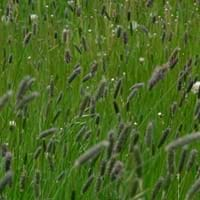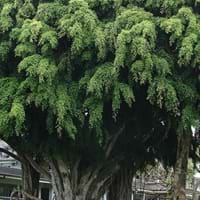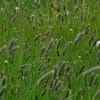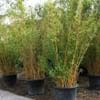Life Span
Perennial
Perennial
Origin
Europe, Asia
Southern Asia, Southeastern Asia, India, Melanesia, Australia
Types
not available
Not available
Habitat
Grassland
Temperate Regions, tropical environments, Tropical regions
USDA Hardiness Zone
5-8
10-15
AHS Heat Zone
8 - 5
12-10
Sunset Zone
2a, 2b, 3a, 3b, 4, 5, 6, 7, 8, 9, 10, 14, 15, 16, 17, 21, 22, 23, 24
H1, H2, 13, 23, 24
Habit
Clump-Forming
Thicket/Colonizing
Flower Color
White
Not Available
Flower Color Modifier
Bicolor
Bicolor
Fruit Color
Not Available
Yellow, Red, Green, Pink, Orange Red, Black
Leaf Color in Spring
Green
Dark Green
Leaf Color in Summer
Light Green
Dark Green
Leaf Color in Fall
Green
Dark Green
Leaf Color in Winter
Tan
Dark Green
Leaf Shape
Grass like
Elliptic
Plant Season
Spring, Summer, Fall, Winter
Spring, Summer, Fall, Winter
Sunlight
Full Sun
Full Sun, Partial Sun, Partial shade
Growth Rate
Medium
Very Fast
Type of Soil
Clay, Loam, Sand
Loam, Sand
The pH of Soil
Acidic, Neutral, Alkaline
Acidic, Neutral, Alkaline
Soil Drainage
Average
Well drained
Bloom Time
Spring, Summer
Spring
Tolerances
Wet Site
Drought, Full Sun, Shade areas, Variety of soil types
Where to Plant?
Ground
Ground
How to Plant?
Seedlings
Cuttings, Layering
Plant Maintenance
Medium
Low
Watering Requirements
Requires a lot of watering, Requires regular watering
Water carefully
In Summer
Lots of watering
Lots of watering
In Spring
Ample Water
Moderate
In Winter
Moderate
Average Water
Soil pH
Acidic, Neutral, Alkaline
Acidic, Neutral, Alkaline
Soil Type
Clay, Loam, Sand
Loam, Sand
Soil Drainage Capacity
Average
Well drained
Sun Exposure
Full Sun
Full Sun, Partial Sun, Partial shade
Pruning
Prune to control growth
Remove damaged leaves, Remove dead branches, Remove dead leaves
Fertilizers
Requires high amount of nitrogen
10-10-10, All-Purpose Liquid Fertilizer, Any balanced general purpose fertilizer, slow-release fertilizers
Pests and Diseases
Red blotch
Red blotch, Soft scales
Plant Tolerance
Wet Site
Drought, Full Sun, Shade areas, Variety of soil types
Flowers
Showy
Insignificant
Flower Petal Number
Single
Not Available
Foliage Texture
Medium
Medium
Foliage Sheen
Matte
Glossy
Invasive
Sometimes
Sometimes
Attracts
Not Available
Birds
Allergy
Asthma, conjunctivitis, Rhinitis
Rhinoconjunctivitis, wheezing
Aesthetic Uses
Not Used For Aesthetic Purpose
Bonsai, Cottage Garden
Beauty Benefits
Not Available
Reduce Bruises
Environmental Uses
Food for animals, Food for insects, Wildlife
Air purification
Medicinal Uses
No Medicinal Use
Antibacterial, Aphrodisiac, Dysentry
Part of Plant Used
Whole plant
Bark, Fruits, Leaves, Root
Other Uses
cultivated as pasture or hay crop, Food for animals, Food for insects
Container
Used As Indoor Plant
No
Yes
Used As Outdoor Plant
Yes
Yes
Garden Design
Feature Plant, Groundcover, Rock Garden / Wall
Container, Feature Plant, Hedges, Houseplant, Screening / Wind Break, Shade Trees, Topiary / Bonsai / Espalier, Tropical
Botanical Name
ALOPECURUS pratensis
FICUS benjamina
Common Name
Meadow Foxtail
Weeping Fig, Benjamin's fig, Ficus tree
In Hindi
Meadow Foxtail
रो अंजीर
In German
Wiesenfuchsschwanz
Birkenfeige
In French
vulpin des prés
figuier pleureur
In Spanish
pradera de cola de zorra
higo llorón
In Greek
Meadow Foxtail
κλάμα σύκο
In Portuguese
Meadow Foxtail
chorando fig
In Polish
łąka ber
płacz rys
In Latin
meadow Foxtail
Plorans ficum
Phylum
Magnoliophyta
Magnoliophyta
Class
Liliopsida
Magnoliopsida
Order
Cyperales
Urticales
Clade
Angiosperms, Commelinids, Monocots
Angiosperms, Eudicots, Rosids
Tribe
Not Available
Ficeae
Subfamily
Not Available
Not Available
Number of Species
Not Available
Importance of Meadow Foxtail and Weeping Fig
Want to have the most appropriate plant for your garden? You might want to know the importance of Meadow Foxtail and Weeping Fig. Basically, these two plants vary in many aspects. Compare Meadow Foxtail and Weeping Fig as they differ in many characteristics such as their life, care, benefits, facts, etc. Every gardener must at least have the slightest clue about the plants he wants to plant in his garden. Compare their benefits, which differ in many ways like facts and uses. The medicinal use of Meadow Foxtail is No Medicinal Use whereas of Weeping Fig is Antibacterial, Aphrodisiac and Dysentry. Meadow Foxtail has beauty benefits as follows: Not Available while Weeping Fig has beauty benefits as follows: Not Available.
Compare Facts of Meadow Foxtail vs Weeping Fig
How to choose the best garden plant for your garden depending upon its facts? Here garden plant comparison will help you to solve this query. Compare the facts of Meadow Foxtail vs Weeping Fig and know which one to choose. As garden plants have benefits and other uses, allergy is also a major drawback of plants for some people. Allergic reactions of Meadow Foxtail are Asthma, conjunctivitis and Rhinitis whereas of Weeping Fig have Rhinoconjunctivitis and wheezing respectively. Having a fruit bearing plant in your garden can be a plus point of your garden. Meadow Foxtail has showy fruits and Weeping Fig has no showy fruits. Also Meadow Foxtail is not flowering and Weeping Fig is not flowering . You can compare Meadow Foxtail and Weeping Fig facts and facts of other plants too.





